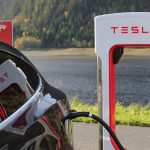Tesla‘s release of its Robotaxi app to the general public has quickly drawn widespread attention, evidenced by substantial download numbers. Curiosity surrounding autonomous vehicles continues to intensify, especially as established ride-hailing competitors monitor Tesla’s latest move. Public access in Austin and California’s Bay Area presents residents with a new transportation option, while offering insights into evolving consumer attitudes towards fully autonomous services.
Recent public launches are notable when contrasted with initial pilot phases, which only permitted selected influencers and media figures to access the system. Updates from cities like Austin have consistently reported limited operational issues, and regulatory scrutiny has centered mainly on safety concerns rather than protest or significant disruption. App adoption rates eclipse previous efforts by Tesla and other firms, surpassing user engagement benchmarks set by autonomous vehicle launches from Waymo and ride-share rollouts by Uber.
Strong Interest Drives Early Success
Demand for access to Tesla’s Robotaxi platform appears robust, as iOS users have enabled the app to quickly rise in popularity charts. Only the iOS version is currently available, and Android users will need to wait for a future release. Most riders have given positive initial feedback, with only a single safety concern officially noted by the City of Austin throughout the extended testing period.
Safety Measures Remain, but for How Long?
Tesla has continued to deploy both Safety Monitors and Safety Drivers for these early rides as extra precautions. Elon Musk has indicated these safeguards will be phased out by the end of the year, pending continued positive operational data.
“We expect to remove safety drivers by year-end, depending on regulatory approval,”
Musk stated, pointing to confidence in the autonomous technology’s readiness.
How Does Demand Stack Up Against Rivals?
During its first day on Apple’s App Store, the Tesla Robotaxi app surpassed Uber’s top 30-day download periods by as much as 40% and outperformed Waymo’s highest-ever single day sixfold, according to Brett Winton of ARK Invest. Community interest had been evident prior to official launch, with many users requesting wider testing opportunities.
“Today’s download numbers show very strong interest from the public,”
a Tesla spokesperson confirmed, highlighting the sharp spike in adoption.
Assessing this event alongside previous launches in the autonomous ride-hailing industry underlines significant shifts in public perception and competition dynamics. Earlier efforts to build similar platforms, such as Waymo’s pilot programs and ride-sharing extensions from Uber, encountered slower adoption rates and more frequent operational setbacks. Tesla appears to be leveraging established brand loyalty and anticipation generated by its marketing approach, resulting in a more enthusiastic market response and swifter user onboarding. The current strategy may reflect lessons learned from earlier industry rollouts, particularly regarding ease of access and selective city launches.
Tesla’s Robotaxi app rollout demonstrates an accelerated adoption curve influenced by public anticipation, limited regional launches, and measured expansion of its vehicle fleet. The integration of precautionary safety measures and a waitlist system signal Tesla’s cautious approach to meeting regulatory requirements and rider expectations. By closely monitoring community feedback and comparing download statistics to major rivals, Tesla positions itself to adjust scaling and app optimization while Android users await future inclusion. Prospective users and industry watchers should consider the significance of early download data, the temporary nature of current safety protocols, and potential regulatory responses as autonomous ride-hailing services move further toward broad implementation. Understanding these dynamics can help consumers and companies alike navigate the evolving landscape of transportation technology.










